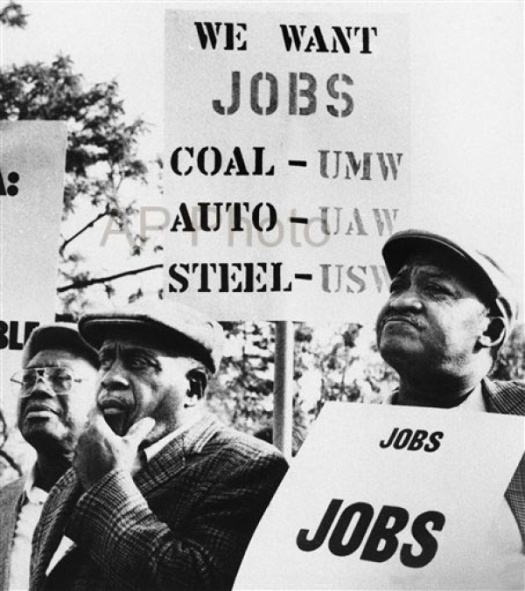
WASHINGTON–“Astounding” is how President Obama, speaking March 6 in Columbus, Ohio, characterized the nation’s new unemployment figures – a staggering 8.1 percent, the highest since 1983 as employers pick up the pace of layoffs.
WASHINGTON–“Astounding” is how President Obama, speaking March 6 in Columbus, Ohio, characterized the nation’s new unemployment figures – a staggering 8.1 percent, the highest since 1983 as employers pick up the pace of layoffs.
Just as disconcerting is the sharp rise in unemployment among African-Americans – a whopping 13.4 percent in February. The last time the Black monthly unemployment rate was so high was in February 1994, as the nation was digging out of a recession, according to the Labor Department.
The latest figures continue to show job losses are large and widespread across nearly all major industry sectors. In January, the overall national unemployment rate was 7.6 percent.
For Blacks, it was 12.6 percent.
Bureau of Labor Statistics indicate the Black unemployment rate has traditionally far exceeded that of other ethnic groups, especially whites, whose joblessness is normally half that of African-Americans.
Reasons for the disparity cited by experts include a gap in education between Blacks and whites, marginal ties by African-American households to the labor market and a failure by policy-makers to equate Black unemployment to a crisis needing urgent attention.
The BLS Web site, which maintains Black unemployment data dating back to 1972, also states that the Black jobless rate reached its lowest level on record in April 2000, when it dropped to 7.0 percent.
While the agency’s latest figures highlight a growing gender gap between Black men and women in the workforce, it also shows that the unemployment rate for Black men in February was 16.3 percent compared to 10.8 percent for Black women.
______
In photo: In this Oct. 9, 1982, file photo demonstrators protesting against unemployment in Lafayette Park, face the White House in Washington, the day the government released the unemployment figure for September with the jobless rate climbing above 10 percent. Unemployment hasn’t reached 1982 levels and the Gross Domestic Product hasn’t fallen quite as far, but pain from the current recession, which started in Dec. 2007, is spread more widely across the nation, and uncertainty about the health of the U.S. economy already is worse on March 6, 2009, than it was in 1982.
To read the rest of this article, subscribe to our digital or paper edition. For previous editions, contact us for details.
Copyright 2009 Associated Press. All rights reserved. This material may not be published, broadcast, rewritten, or redistributed.

